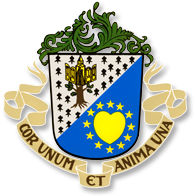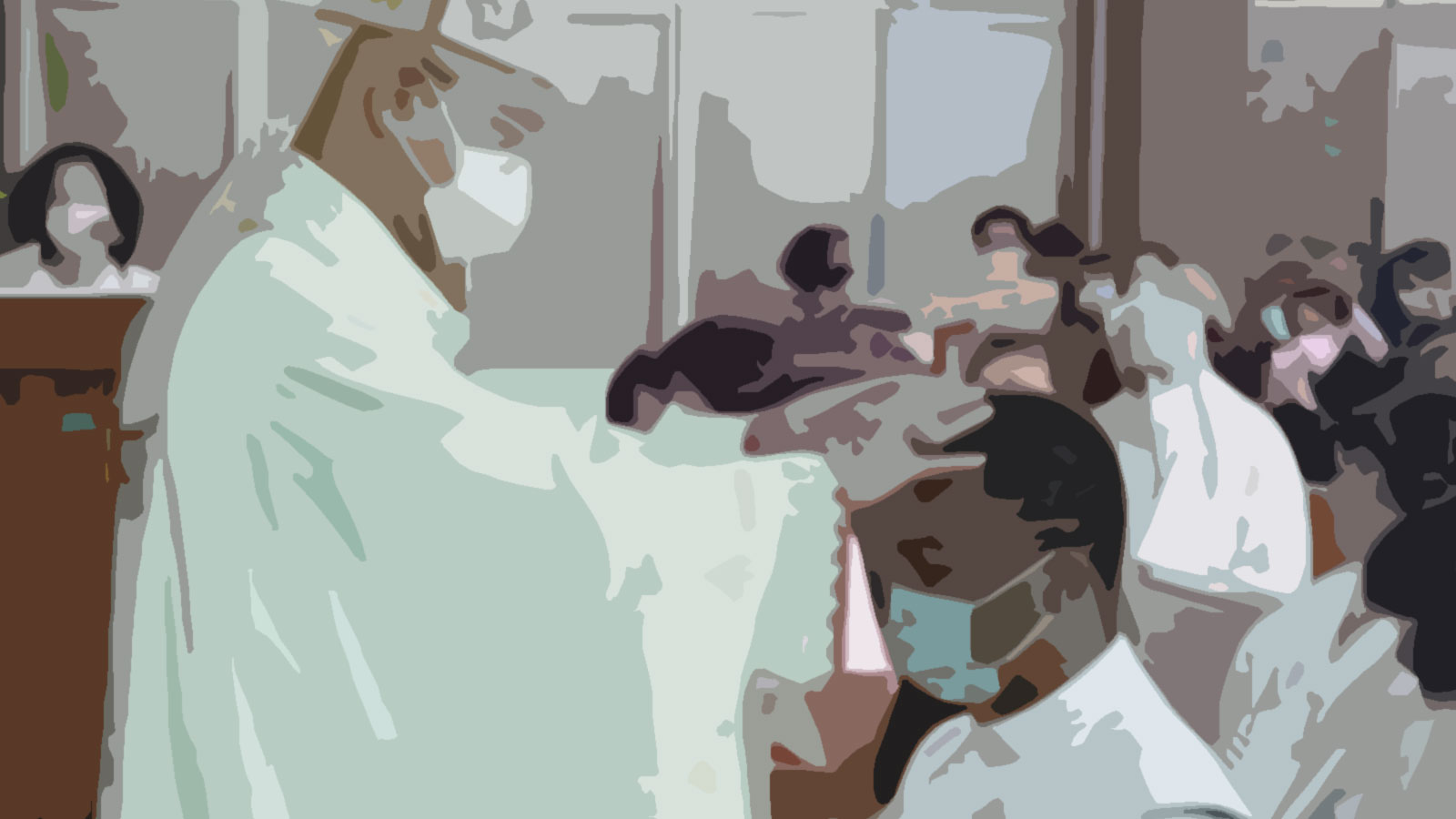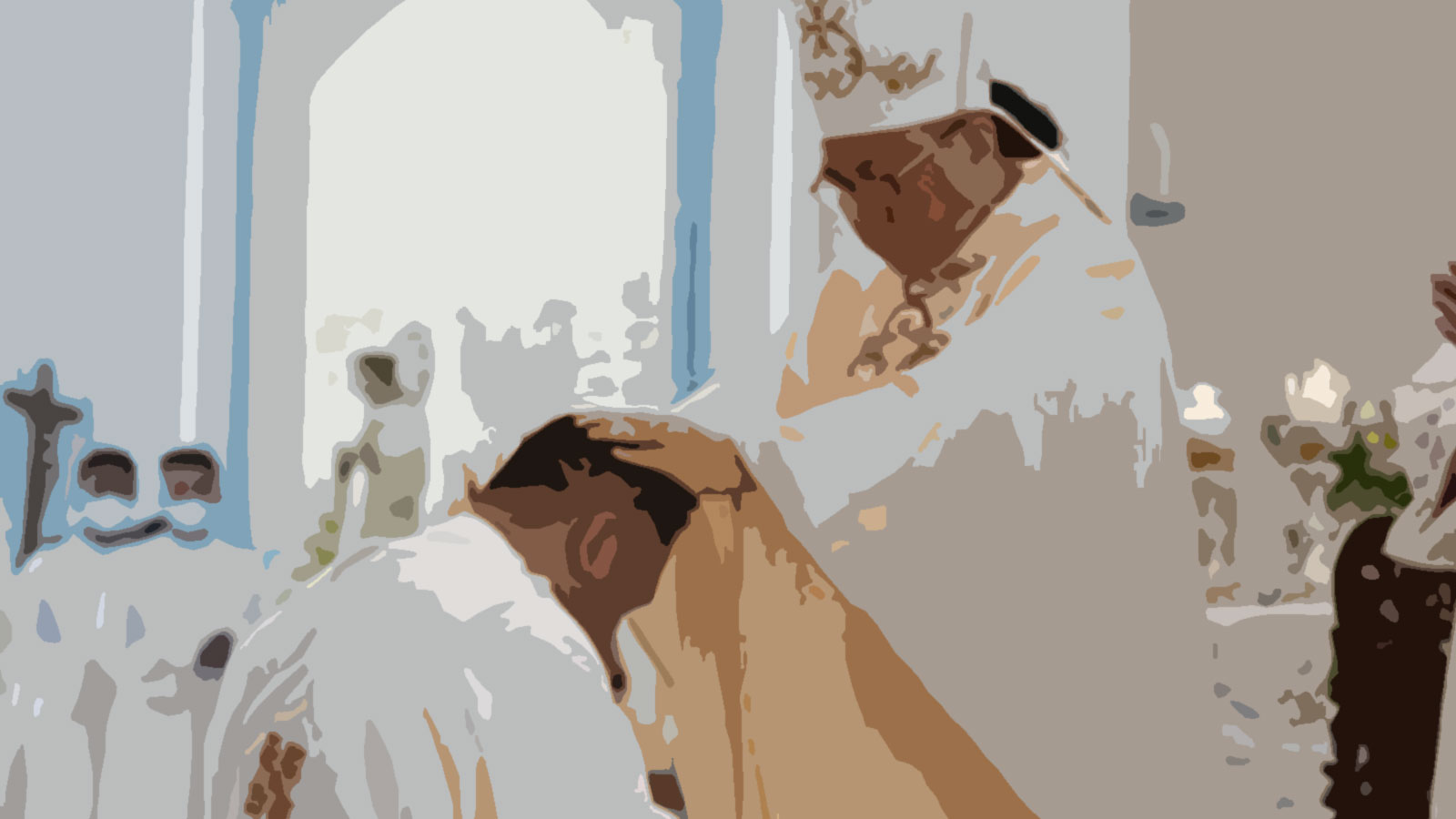ABOUT OUR LOGO
The CICM emblem was first published in the Chronica of April 1934 without official explanation. However, the official explanation of the CICM logo can be considered to be what is read in the “Report of the Vicar General to the General Chapter of 1947.” Addressing the question of religious life in CICM, Jozef Vandeputte (who guided the Congregation first as Vicar General after the death of Constant Daems from 1935 to 1947 and as Superior General from 1947 to 1957) addressed the Capitulants in the following way:
Each of you will still remember that there was a certain tension in the Congregation at the time of the previous Chapter (1930). The letter of the Propaganda dated 1929 giving the results of the canonical visitation undertaken the year before by Father Gubbels at Rome’s request, draws the attention to a certain disagreement among the CICM members, and to Rome's wish to have it solved as soon as possible. Our Superior General Constant Daems (Superior General from 1930 to 1934) tried then to restore and strengthen mutual understanding immediately. Looking for an effective solution for that purpose, he had the mortal remains of our Venerable Founder transferred to the Mother House. He wanted it to be the symbol of the bond of unity in the Congregation. More than ever before, he intended to strengthen this bond during his generalate.

|
The emblem of Constant Daems |
This is what he solemnly declared in his talk to the many CICM present in the refectory of Scheut on Sunday May 10, 1931, the day of the solemn transfer of the mortal remains (of the Founder Théophile Verbist) to our church in Scheut. For the same reason, he renewed the Congregation’s coat of arms and seal, and added the motto Cor unum et anima una. It was approved at the Council’s meeting (of the General Government) of October 5, 1933, shortly before his departure for China and the Philippines. It was about the last major measure of his of his active administration. (Chronica CICM, No. 7, November 2001, pp. 214-215).
- The motto
Théophile Verbist, who died prematurely, barely five years after the foundation of CICM, did not leave us a motto. It was Father Constant Daems who gave it to us at a difficult time in the Congregation's history.
This motto comes directly from the Acts of the Apostles: “The Whole group of believers was united, heart and soul” (4:32). This phrase expresses God's ideal for the humanity He created. It is the heart of the Gospel message. In Jesus, we are children of God, by the Spirit's power, and therefore brothers and sisters of the same family.
Constant Daems chose this motto of brotherhood and joy that would later become a missionary motto.
From the sixties onward, this motto became more and more emphasized in CICM documents, and its content will grow considerably.

The motto One Heart, One soul, Cor Unum Et Anima Una in Latin, appears in the provisional Constitutions of 1968 (Art. 4). Later on, when referring to our missionary commitment, the Chapter of 1974 declared: “We want to be signs and instruments of brotherhood (Kindling the Fire, p. 45)”. The 1978 General Conference pays special attention to our vocation to universal brotherhood in Jesus Christ. This Conference's report is published under the title “One Heart, One Soul”.
Finally, the 1988 Constitutions also refer to the motto:
“Religious missionaries of different races and cultures, we live and work together as brothers. One heart and one soul, we witness to the Father’s will that all men and women be brothers and in Christ. (Art. 2).”
Remarkably, the motto is directly related to the words “witness to the universal brotherhood. This view of seeing is fairly summarized in a paragraph of CICM Constitutions Commentary (1989): “The ideal of the first Christian community, one heart and one soul (Acts 4:32), has also become our missionary motto (p. 17).”
- The trunk with the Virgin and Child
This is the oldest element found in all the CICM coats of arms. Since the year 1445, Mary's statuette attached to a linden tree by a pious shepherd and dedicated to Our Lady of Grace had been venerated at Scheut. The story goes that pilgrims went to this sanctuary where miracles had been duly noted. In 1455 a chapel was erected there. In the course of the centuries, the chapel was destroyed three times, by the Protestants in 1580, by the Emperor-Sacristan Joseph II in 1783, and during the French Revolution. For about sixty years, the chapel remained in ruins and abandoned until 1855, a well-to-do inhabitant of Brussels, J.C. Brabandt, who could no longer stand the profanation of this sanctuary, bought the land and the chapel, and had it restored at his own expense.

Joseph Rutten (Superior General from 1920 to 1930) wrote that our Founder Théophile Verbist had a great devotion to Mary, which brought him to Scheut, and it was the devotion of several servants of Mary who gave him the sanctuary of Our Lady of Grace.
Why did our Founder and his companions choose the name CICM instead of Our Lady of Grace? Here is one possible explanation. The proclamation of the Immaculate Conception's dogma (in 1854, in reviving Marian devotion, contributed to the rapid development of devotion to the Heart of Mary and the spread of the name 'Immaculate Heart of Mary.' It was then that its liturgical feast was adopted about everywhere in the world. Given such current of devotion at that time to the Immaculate Heart of Mary, it is understandable why our Founder and his companions chose the name CICM.
Why then did they, and others after them, nevertheless keep the miraculous trunk of Our Lady of Grace as the CICM coat of arms? Here are some indications. It was at Scheut, near the sanctuary of Our Lady of Grace, where the CICM was born. Our Founder and his companions lived there; they met there many times, they immersed themselves in the history of the sanctuary; and they prayed to our Lady of Grace. It was there, too, where they prayed one last time before departing for mission.
After the 1974 Chapter, a century after the Founder's death, the old sanctuary of Our Lady of Grace was replaced by another chapel. The statue that J.C. Brabandt had placed in his chapel and restored in 1855-1860, is now found in the new chapel at Scheut.
- The heart surrounded by twelve stars

It is generally said that the heart of the twelve stars comes from a text of Revelation (12:1): “And a great sign appeared in heaven, a woman adorned with the sun, with the moon is under her feet, and on her head a crown of twelve stars”. Our predecessors opted for a traditional Catholic interpretation and saw Mary, the Woman with twelve stars.
- The arms are placed inside a shield
The shield is the field that contains the parts of the coat of arms.
- (The trunk with the Virgin and Child) on an ermine background

In heraldry, an ermine refers to a black spot on a white background. Reminiscent of the winter coat of the graceful Mustelidae. This animal has long symbolized courage, nobility, and purity.
The CICM emblem has had so many other minor changes and adaptations. Thus, for example, the round form of the emblem’s shield, the changing position of the different elements inside the emblem, and the drawing of the emblem on a ceramic tile of different formats for use as a door handle or simply as decoration. Some CICM Provinces, such as in the Philippines, added some elements and translated the motto. The emblem made by the General Government, after it transferred to Rome at the end of 1967, carried again in Latin the name “Congregation of the Immaculate Heart of Mary, Scheut”, albeit without the motto.
Those who would like to know the different stages of evolution up to the present emblem are requested to consult the articles of our confrere Nestor Pycke, “Emblem and Spirituality CICM 1st Part” in Chronica CICM, No. 7, Sept.-Oct. 2001, p.213-217; 2nd Part in Chronica CICM, No. 8, November 2001, p.260-266; 3rd Part in Chronica CICM, No. 9, December 2001, p.305-309.









